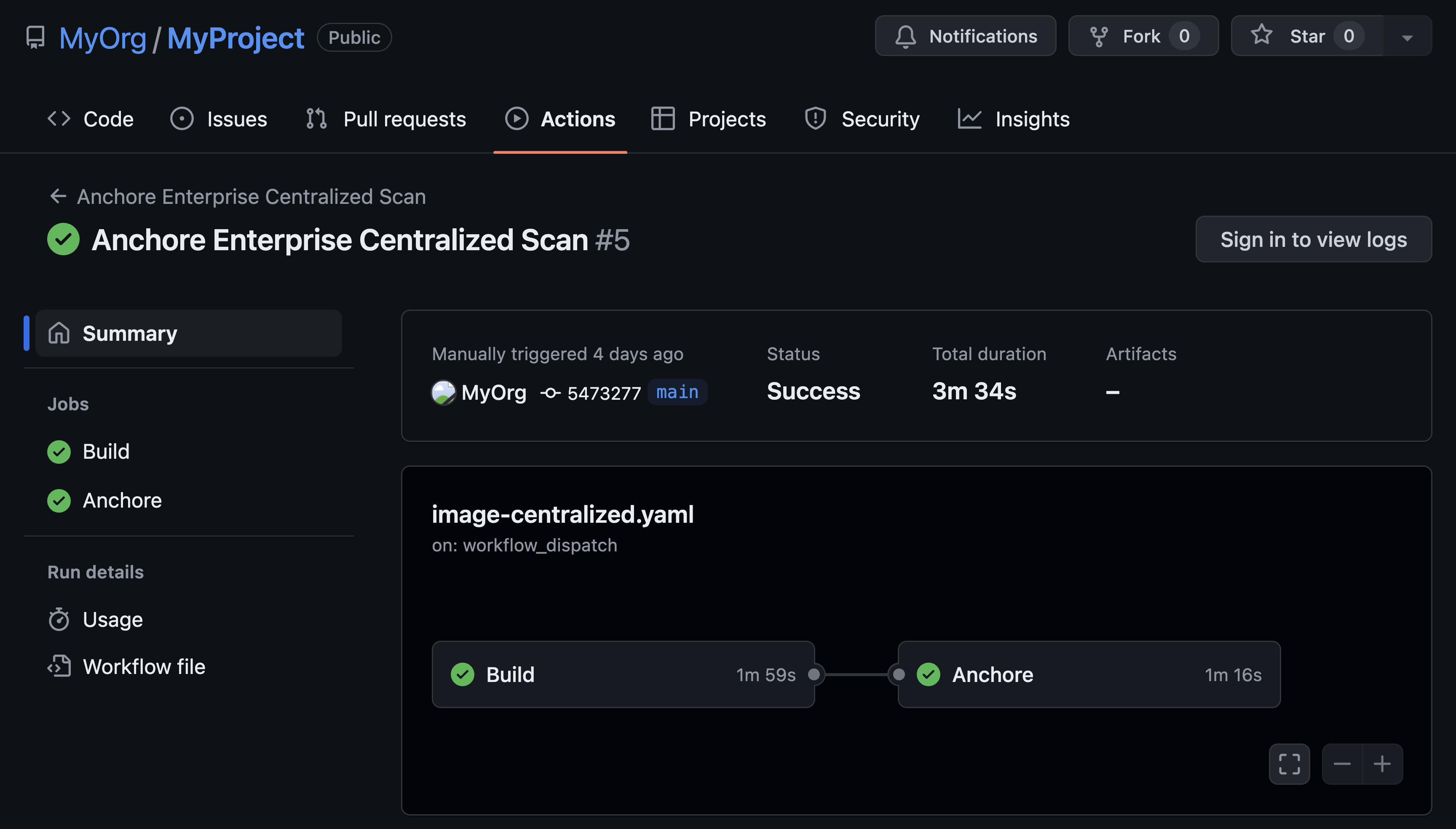In this template, we will walk through how to configure a Codefresh pipeline to build an image from a Dockerfile, conduct an Anchore scan, evaluate the scanned image against an Anchore policy, and push it to a Docker registry.
Codefresh pipelines, are the core component of the Codefresh platform. These pipelines are workflows that contain user-defined steps that are all executed inside a user-chosen Docker container. These steps are defined using a codefresh.yaml file.
The Anchore scanning step will take place prior to the image being pushed to a Docker registry. Depending on the output of the policy evaluation and pipeline configuration, the image may not be pushed into the registry.

Setup
Prior to setting up our Codefresh pipeline, an Anchore Engine service needs to be accessible from the pipeline. Typically this is on port 8228. In this example, I have an Anchore Engine service on AWS EC2 with standard configuration. I also have a Dockerfile in a Github repository that I will build an image from during the first step of the pipeline. In the final step, I will be pushing the built image to an image repository in my personal Dockerhub.
Most typically, we advise on having a staging registry and production registry. Meaning, being able to push and pull images freely from the staging/dev registry, while maintaining more control over images being pushed to the production registry. In this example, I am using the same registry for both.
In the configuration section of the Codefresh pipeline, I've added the following environment variables:
If ANCHORE_FAIL_ON_POLICY is set to true, the pipeline will fail, and the image will not be pushed to the registry.
dockerhubUsernamedockerhubPasswordANCHORE_CLI_URLANCHORE_CLI_USERANCHORE_CLI_PASSANCHORE_CLI_IMAGEANCHORE_RETRIESANCHORE_FAIL_ON_POLICY
Build Image
In the first step of the pipeline, we build a Docker image from a Dockerfile as defined in our codefresh.yaml:
build_image:
title: Building Docker Image
type: build
image_name: jvalance/sampledockerfiles
working_directory: ./
dockerfile: Dockerfile
Conduct Anchore Scan
In the second step of the pipeline, we scan the built image with Anchore as defined in our codefresh.yaml:
anchore_scan:
title: Scanning Docker Image
image: anchore/engine-cli:latest
description: Analyzing Image with Anchore...
commands:
- echo "Adding image to Anchore engine"
- anchore-cli image add ${{ANCHORE_SCAN_IMAGE}}
- echo "Waiting for image analysis to complete"
- counter=0
- while (! (anchore-cli image get ${{ANCHORE_SCAN_IMAGE}} | grep 'Status: analyzed') ) ; do echo -n "." ; sleep 10 ; if ; then echo " Timeout waiting for analysis" ; exit 1 ; fi ; counter=$(($counter+1)) ; done
- echo "Analysis complete"
- if ; then anchore-cli evaluate check ${{ANCHORE_SCAN_IMAGE}} ; fi
Depending on the output of the policy evaluation, the pipeline may or may not fail. In this case, I have set ANCHORE_FAIL_ON_POLICY to true and exposed port 22. This is in violation of a policy rule, so the build will fail during this step.
Push Image
In the final step of the pipeline, we push the Docker image to a registry as defined in the codefresh.yaml:
push_image:
title: Push Docker Image
description: Pushing Docker Image...
type: push
candidate: '${{build_image}}'
tag: latest
registry: docker.io
credentials:
username: '${{dockerhubUsername}}'
password: '${{dockerhubPassword}}'
As a reminder, we advise having separate Docker registries for images that are being scanned with Anchore, and images that have passed an Anchore scan.


